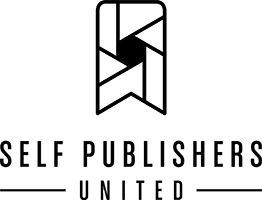I am cautious about my work. I often hide my name. I feel a reluctance to share my work. My subjects are personal and dear to me. I am Wies den Ouden photographer.
In this interview, Wies answers the following questions and walks us through the process of making her books, sharing with us details, anecdotes and sources of inspiration. In this interview, we learn to know not only her books, but the way Wies developes her projects.
Can you find three words that describe what your books are about?
How do you see this book in the bigger frame of your work?
Why did you decide to give these projects the form of a book?
Can you say something about the editing of your book?
Did you work alone? Did you work with an image editor and designer?
Can you mention 2 photobooks that inspire you?
My work is about memories, pain and strength

If a subject has my interest, I collect images, quotes, articles, objects and photographs concerning the subject. Arranging it in a book, box or other form makes it come together and to me, it becomes a whole. In my head, they already belong together and through the chosen form I force it to stay together. Thus, I get a grip on it. It is a way of coping with my life. Arranging, ordering and reordering things is a necessary action for me.
Editing and design are essential parts of my work. It starts with a thorough search. For the right paper, smooth and very thin or thick and course, depending on what the subject requires. This book, about the period after my then 17-year-old son’s brain haemorrhage in ’95 was a long process. The symbolism of the story is hidden in the details. Small intimate pictures on thin, almost transparent paper. Text printed black on black, so you don’t see it at first sight. The color red, unavoidable on the cover, dark as his blood. The title, the actual date it happened, embossed in the cover as it is pressed in my heart. Black binding thread represents the story as it runs through my life, always present, some moments more than others. Slowly my son emerges in the book. First from the back, unrecognizable. Only on the back cover his actual profile, debossed. Scattered through the whole book are loose cards with his writings and paintings from the same period. To me they are tokens. Important milestones of the long period of recovery.

Because of a renovation, I had to clear-out my garage and I rediscovered my collection of carefully packed things for when there is a party. I collected plates, cloths, glasses, anything that might come in handy. Because I found it hard to part with these items, I decided to photograph them all before throwing anything away. It was a journey through the past with lots of discoveries since I had forgotten most of the things. They brought back various memories off times gone by. Therefore, black seemed the right color for the book. A black background combined with an old look as if it was found in an attic. I want the viewer to have the same journey I had. You stumble upon a collection of things. No title necessary. Only on the back cover, you can find my name, debossed as in my first book. I put the booklet in a box, because things you want to keep, you often keep in a box. Easy to stow away. Do we really want to keep them?
These are two photo books that I am inspired by

Kiyoshi Suzuki: a life’s work of photography
Kiyoshi Suzuki (1943 – 2000) worked for more than 30 years within a relative solitude. He welcomed the unexpected, the surprises that can be so typical in photography. A man who planned his own path and followed his intuition. He played with life, a continuous moving inside the stories that life brings, connecting literature, music, theatre, religion, poverty, family in a meditative as well as an explosive, soulful way, always driven by a profound fascination for the fragility and integrity of the small and the humane.
Wolfskinder
Wolfskinder is another one of my favorites. The photographs, the stories, the weight, the paper, the format, the landscapes, the colors, the portraits… I love to hold it in my hands, look at it, feel it.

More practical details about my books

1 December 1995: I made it with Hamid Sallali, Independent Graphic Designer, Amsterdam. The offset printing is Unicum by Gianotten, Tilburg. Edition: 150. Binding by Rietveld, Rotterdam. Paper: Igepa, Wild Clay, 450 grs. Malmero Noir, 145 grs. EOS 2.0, 100 grs, IBO One, 60 grs and Magno Volume, 150 grs.
Price: € 35,00 shipping cost excluded. Available through PhotoQ Bookshop Amsterdam, www.photoqbookshop.nl

The second book (without title): a good deep black was essential to me. Therefore, I went to printing office robstolk (www.robstolk.nl). They are specialized in black tones. Edition: 100, paper: Mohawk eggshell 120 gr, binding: Agia, Amsterdam, boxes: Brown Cartonnages, www.browncartonnages.nl. Price: € 35,00 shipping cost excluded. Available through PhotoQbookshop, www.photoqbookshop.nl






